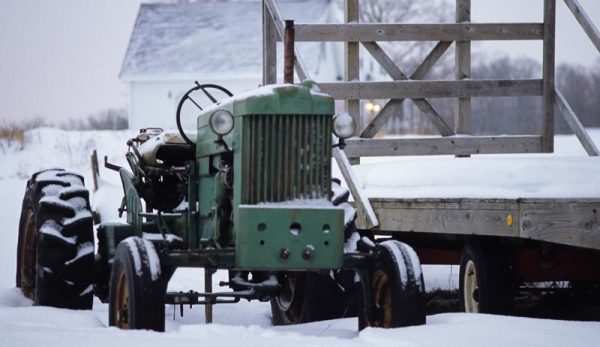
Just the other day, I was pushing hard to finish some fence repairs before the first snowstorm of the season. Using a garden tractor, I drove a large wagonload of supplies out to the site. The snow arrived while I was working, and by the time I’d finished there was almost an inch of snow on the ground.
Suffice to say, my garden tractor was unprepared for the sudden change in conditions. On the way back to the barnyard, it started slipping and sliding on a modest uphill slope.
In the end, I had to disconnect the wagon to get my tractor back to the garage. All I could think was, “Why didn’t I start preparing for winter sooner?”
In my defense, winter struck early this year, and with shocking suddenness. One week temperatures were warm and conditions were dry. The next week, a chill filled the air. Weather forecasts called for snowstorms every other day into the foreseeable future.
Such occurrences reiterate the importance of preparing your farm for winter well in advance of the first snowfall. Here are four reasons why early prep beats late prep every time.
Read more: Here are 4 types of tractors you should consider for your farm.
1. The Arrival of Winter Is Unpredictable
Officially, winter begins on Dec. 21. But seasonal weather shifts rarely abide by astronomical definitions.
Up on my northern Wisconsin farm, winter arrive somewhere between the middle of October and the middle of November. If you’re lucky, snow holds off as late as possible and you gain an extra month of quality working weather.
But you definitely can’t count on it. So it’s better to have critical pre-winter tasks completed well in advance of potential snowfall.
2. Simple Tasks Are Harder in Cold Weather
Every year, I wrap the trunks of my young fruit trees with plastic and cloth tree guards to protect them from hungry rodents.
Installing the guards (and taping/tying them in place) is almost impossible when wearing bulky winter gloves. So I try to hit a fine line between wrapping the trunks after the growing season is over, but before frigid weather and snow set in.
I want to be able to take my gloves off without risking frostbite!
Read more: Check out these tips for enduring arctic, subzero temperatures.
3. Unprepared Equipment Leads to Struggles
The incident with my struggling garden tractor is just one example of how equipment can be caught unprepared for the sudden onset of winter weather. At the start of autumn, you should start readying your tools and machines for the coming snow season.
Just for starters, exchange the mower deck on your garden tractor for a snow blower attachment. Or perform annual maintenance on your standalone snow blower.
Go ahead and install tire chains on tractors, and a plow on your farm truck. Gather up hand tools like snow shovels, digging bars, etc. to deal with snow and ice.
Park seasonal equipment like hay balers and wagons in protected places where they won’t be problematic through winter or early spring.
The goal is to avoid waking up one morning to find a foot of snow on the ground while your shovels are trapped in a toolshed and your snow blower needs new spark plugs. That’s just asking for a challenging day.
4. Frozen Ground Makes Some Projects Impossible
Have you ever tried to replace a broken fence post when the ground is frozen? I hope not, because it falls somewhere between difficult and impossible.
Even if you manage to extract the post (a feat in and of itself!), finding enough loose dirt to backfill around the replacement post will be a challenge. Any projects that require shifting dirt around (replacing fence posts, digging compost, grading a driveway, etc.) should be completed well before freezing temperatures settle in.
Once you’re done preparing your farm for winter, you can sit back and “let it snow, let it snow, let it snow” without worry.




